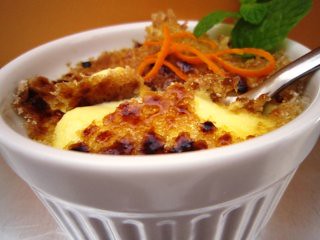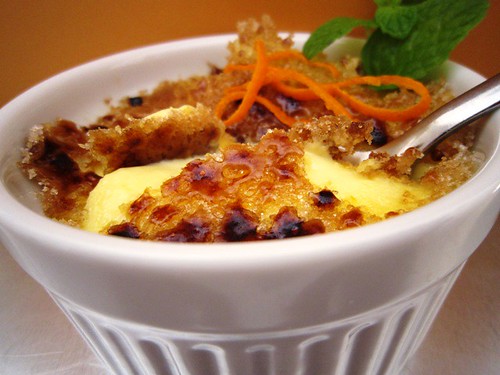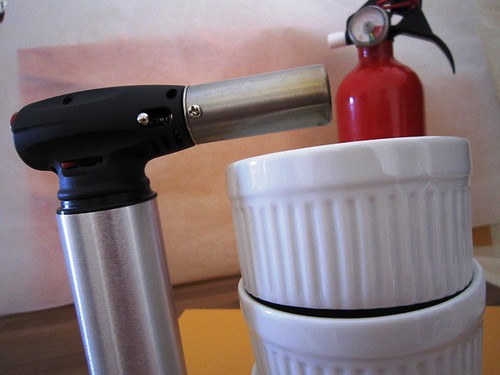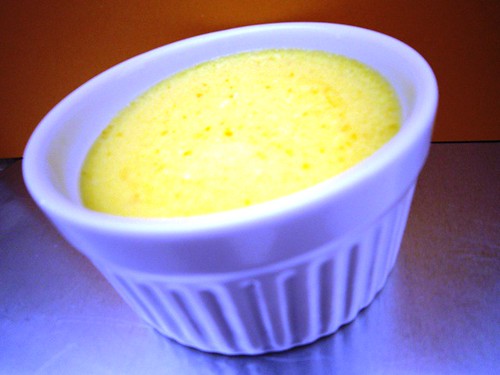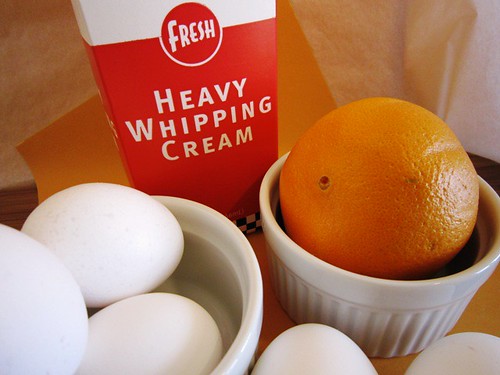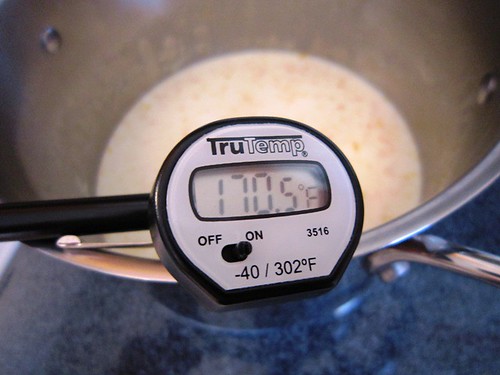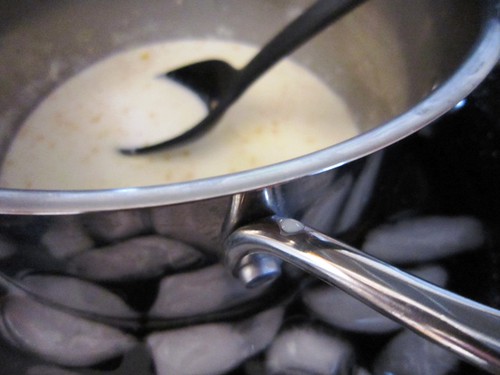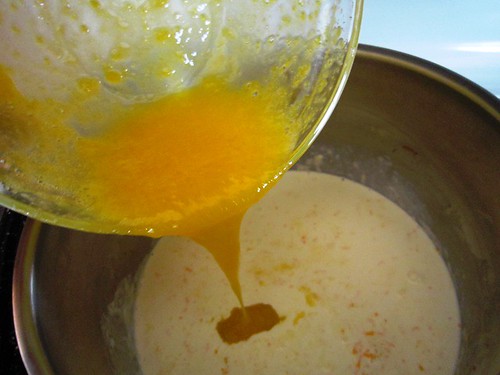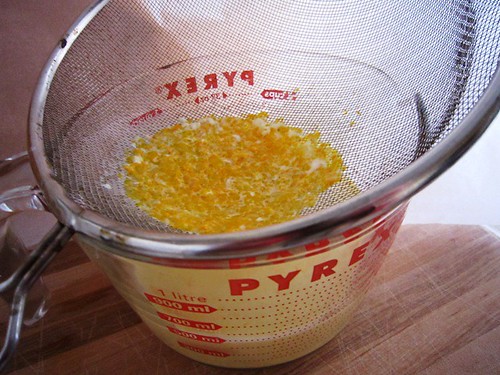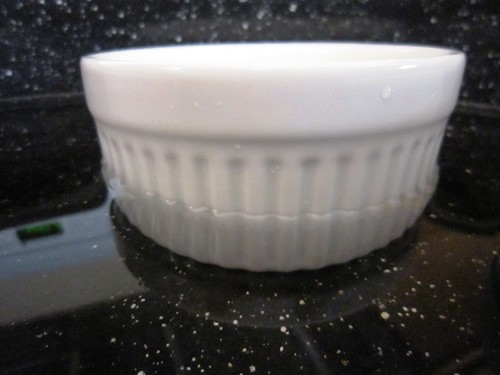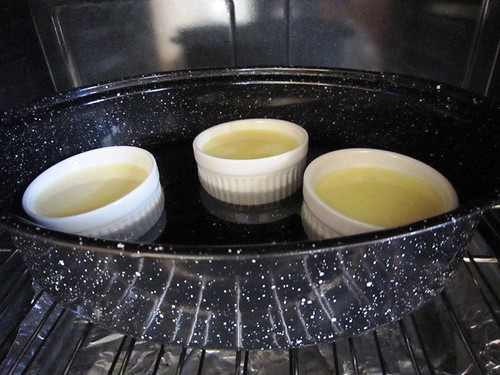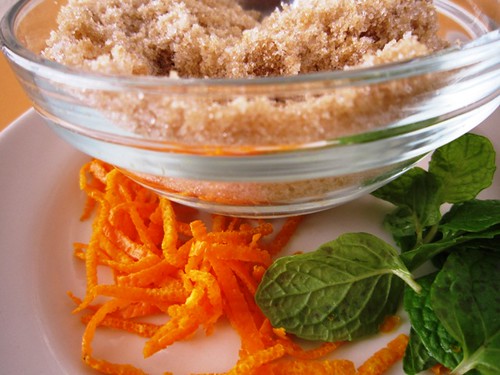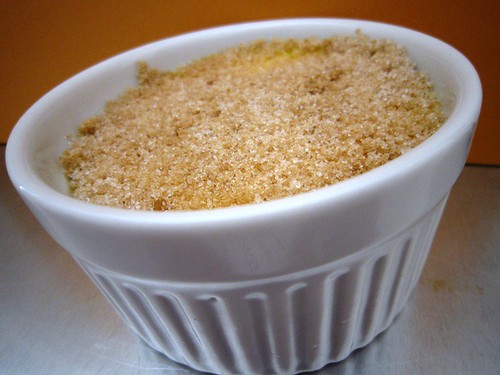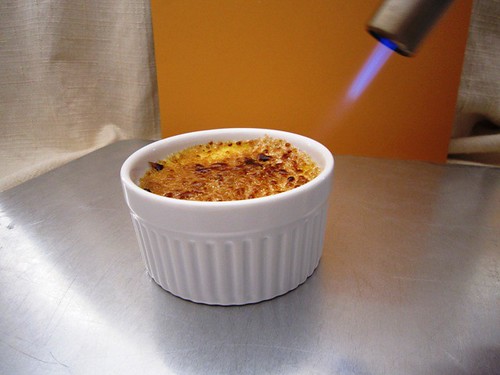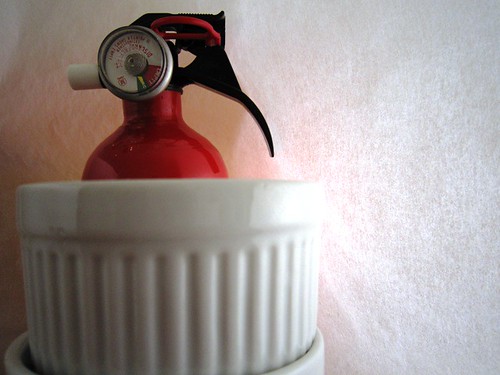This Valentine’s Day, you may be conquering your fear to ask someone on a date. I am conquering my fear of making creme brulee. I love eating the stuff, but I have been a coward about making it until now. I’m facing my fear and sharing my story. My hope is it will help you conquer creme brulee too (if you haven’t already). If I can be brave enough to make it, so can you.
The Story
This was a big step for me, especially with my limited custard-making experience. Where I grew up, “custard” was called “pudding,” and it came in individual-sized, plastic serving containers. Just peel off the top, grab a spoon and eat. If you wanted to be fancy, and make it “homemade,” you got a box of that powdered stuff and added your own milk.
I didn’t learn what “homemade” pudding really entailed until many years later, during a cooking class with my mother-in-law. I was over the moon when I made my first rice pudding from scratch in that class, and the end result was actually edible! Even after the rice pudding success, I wasn’t sure I was ready for making creme brulee. Pudding and custard (the basis of creme brulee) are not exactly the same thing. According to Chow.com, “custard is pudding’s eggy cousin.” And creme brulee is the creme de le creme of custards.
Then I got a big vote of confidence from my mother-in-law last Christmas. She gave me my own set of ramekins and a torch! I had no excuses now. I had to try making it. So I did. In the end, I had nothing to be afraid of. There were no frantic calls to the fire department, no trips to the emergency room and not even a single scorch mark on the kitchen counter.
The Moral of The Story
When you overcome your fears, sweet things can happen.
About the Recipe
For my first creme brulee, I selected a Bitter Orange Creme Brulee recipe from Epicurious. Ken has been on a citrus kick lately, so we always seem to have plenty of oranges around the house.
The Cast of Characters
Heavy whipping cream and eggs are key ingredients to making creme brulee, but the star in this particular creme brulee recipe is the orange. The zest of an orange gives it a sweet, citrus flavor. For a complete list of ingredients, see the recipe from Epicurious.
The Play-by-Play
Before you begin, move the rack in your oven to the bottom rung, and preheat the oven to 300 degrees.
In a medium saucepan on the stovetop, combine the milk, cream and orange zest. Bring the ingredients to “steaming,” which is about 170 degrees. Do not let it come to a full boil.
Remove the pan from the heat, and place it into a water bath. I use my turkey roasting pan as a bathtub.
In a separate bowl, whisk together the eggs and sugar. Then carefully whisk the egg mixture into the cooled milk and cream mixture in the saucepan.
Next, pour the mixture through a strainer into a large glass measuring cup.
Then pour the strained mixture into each of your ramekins.
Dump the ice water out of your roasting pan. Put the ramekins filled with custard into the roasting pan. Then pour enough cool water into the pan to come up the side of the ramekins about one inch.
Now, pop the roasting pan complete with custards into the oven for about 40 minutes, or until the custards no longer wildly “jiggle” when you shake the pan.
After baking, let the custards cool to room temperature in the roasting pan. 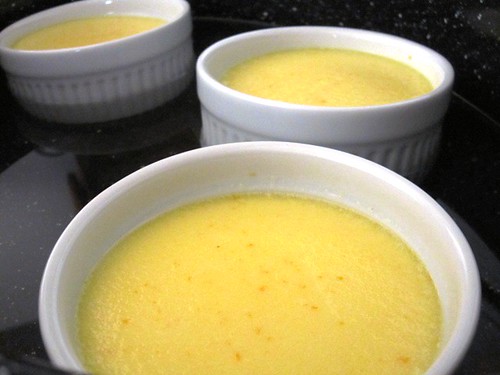
Then loosely wrap each ramekin in plastic wrap and pop them in the fridge. Let the custards chill for at least two hours or overnight.
When you are ready to enjoy your creme brulee, remove the custards from the refrigerator, and let them stand at room temperature for about 20 minutes. While they are adjusting to room temperature, mix together 1/2 cup brown sugar and a 1/4 cup white sugar for your topping. While you are at it, also grab some fresh mint and orange zest to add a little color to your topping later.
With a paper towel, gently dab the tops of the custards to remove any excess moisture. Then sprinkle enough of the sugar mixture over each one to completely cover it.
Now muster up the courage to break out your torch. Using the torch, melt the sugar on top of the creme brulee. It should only take a few seconds. Also, keep your fire extinguisher handy, just in case. As my husband would say, “Safety first!”
Finally, garnish with a little extra orange zest and fresh mint. Then break out your spoon, and enjoy! As Julia Childs would say, “Bon Appétit!”
The Footnotes
- Steaming the milk: Every creme brulee recipe I found, including this one, called for warming the milk and cream, but only until it started to steam. Every recipe also strongly cautioned about not letting the mixture reach a boil, but didn’t provide a precise temperature for “steaming.” So I did some research to find that 212 F is the boiling point and 170F is a good temperature for “steaming” custard, as noted on Baking 911.
- Baking the custard: Baking a custard is a lot like baking a cheesecake. To tell if it is done baking, gently shake the pan. It’s done if it no longer wildly “jiggles.” It may wiggle just a bit in the center, but not much. The trick to both custard and cheesecake is not over baking them so they dry out. If they look a little underdone when you remove them from the oven, don’t worry. They will continue to set up as they chill.
- Torching the tops: Don’t use fine sugar for your creme brulee topping. I’ve tried fine sugar and coarse sugar, and found fine sugar burned too quickly when torched. Also, place a metal baking sheet underneath the ramekins before the torching. It will be cheaper to replace torched baking sheet than a torched countertop.
- One final tip: Keep a fire extinguisher handy, just in case.
The Recipe: Bitter Orange Creme Brulee
For the complete list of ingredients and instructions for making this creme brulee, check out the Bitter Orange Creme Brulee recipe on Epicurious.
